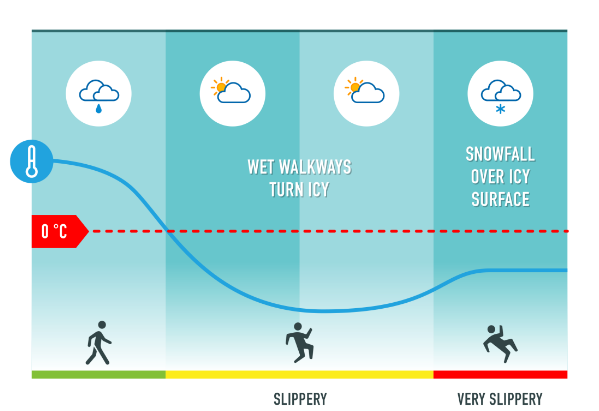Pedestrian road weather at FMI
Marjo Hippi presents a numerical model developed at FMI that simulates the level of slipperiness on the side-walks.
Length: 30 minutes.
The Finnish Meteorological Institute (FMI) has developed a numerical weather model that simulates the level of slipperiness on the sidewalks. The model classifies the expected sidewalk slipperiness into three classes; normal, slippery and very slippery. Normal means that there is not ice or snow on the surface. FMI is giving warnings if very slippery sidewalk condition is expected. During very slippery sidewalk condition normal walking is difficult for everyone and extra attention must be paid off when walking.
Icy and snowy sidewalks are very typical phenomena in Finland during winter. Slipperiness due to ice and snow on sidewalks increases the risk of pedestrians' injuries. Almost every second person slips annually in Finland and around 50 000 persons (1 % of Finnish population) are injured and need medical attention. Slip injuries are a big problem causing economic losses and long sick leaves. Emergency departments are crowded during the most slippery days. FMI's warnings for slippery pedestrians' sidewalk condition is one way to improve the safety among the pedestrians and add awareness of slipperiness. Pedestrians may reserve more time for travelling, choose the way of travelling or use anti-slip devices if very slippery pavement condition is forecasted.

